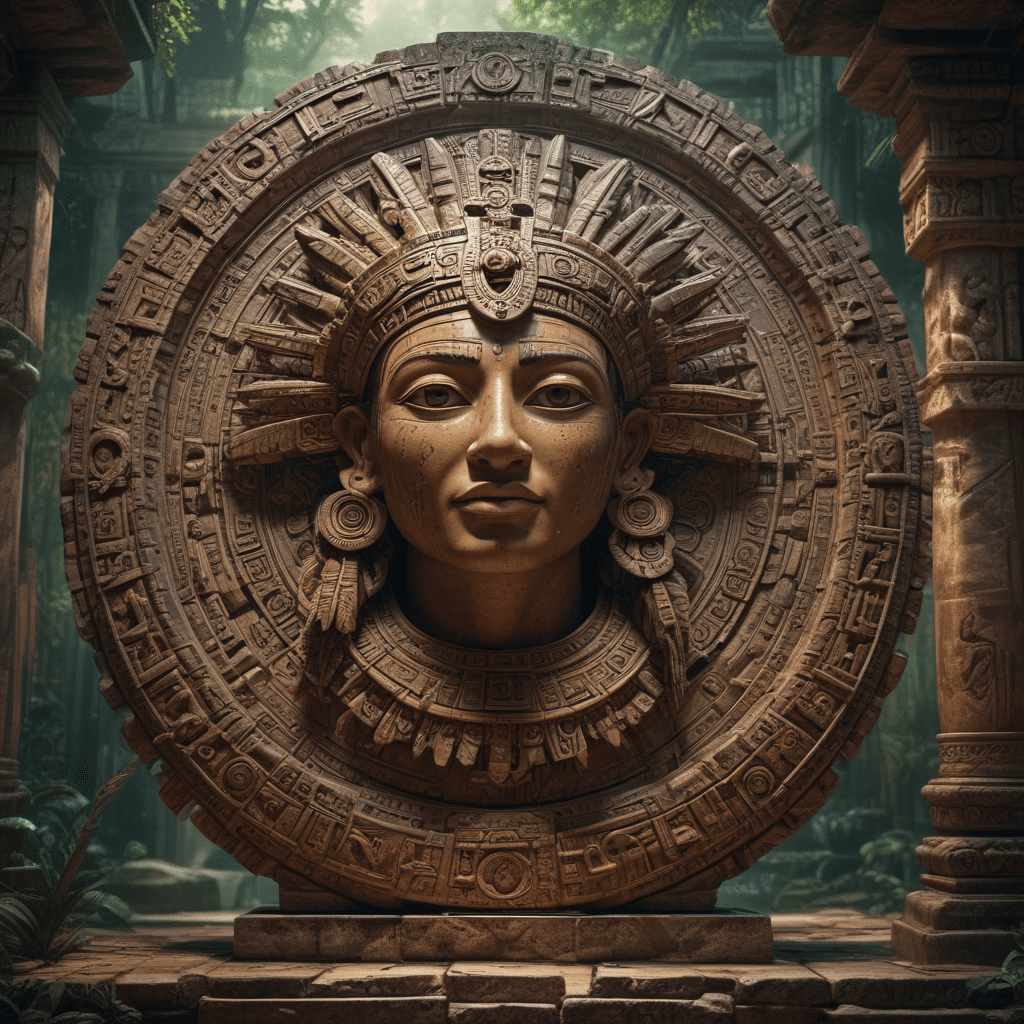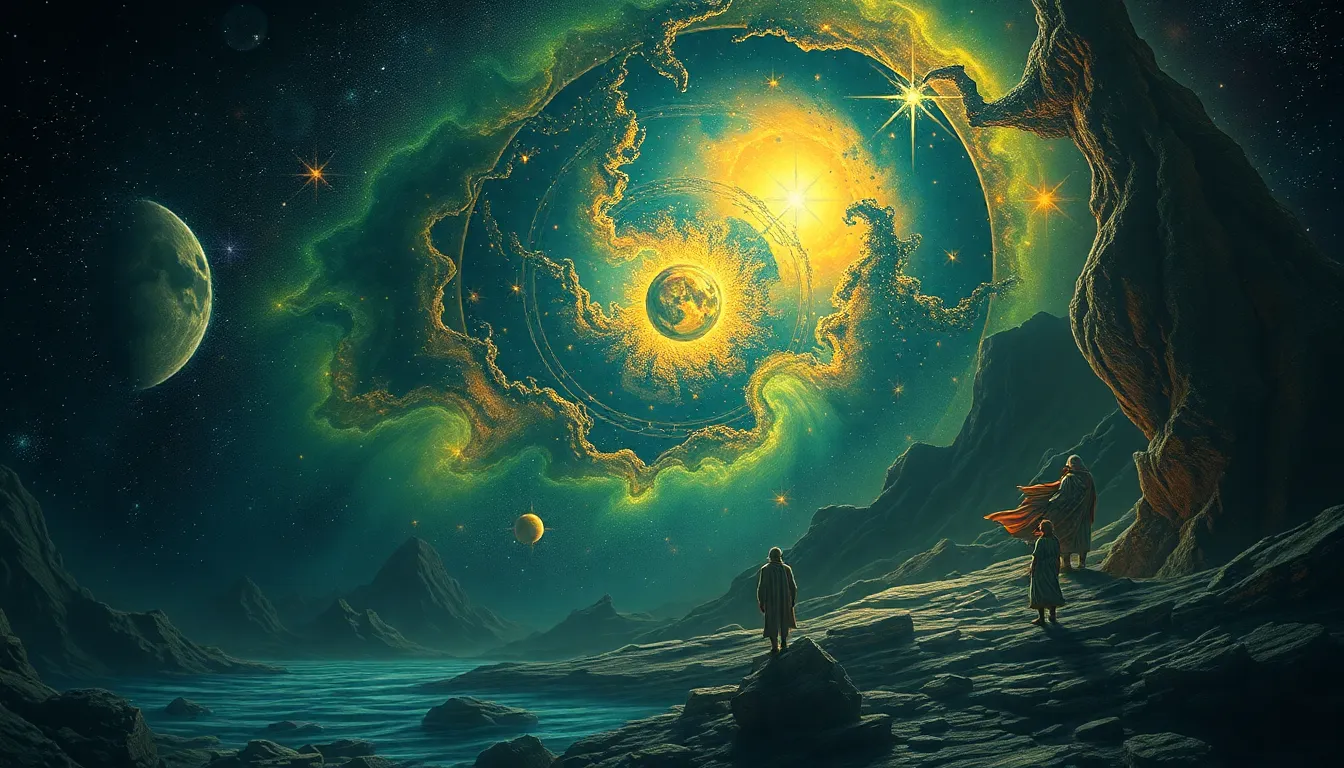1. Introduction: A Glimpse into Mayan Cosmology
The ancient Maya civilization, renowned for its sophisticated mathematical and astronomical knowledge, developed intricate calendar systems that played a central role in their daily lives and religious beliefs. These calendars were not merely tools for timekeeping but served as profound expressions of their cosmology, mythology, and understanding of the universe's cyclical nature. Through their intricate calculations and symbolic representations, the Maya sought to connect with the divine, interpret the rhythms of time, and predict the future.
2. Mythological Roots: The Creation Story and the Sacred Calendar
The 260-day Tzolkin calendar, also known as the "sacred calendar," holds deep significance within Mayan mythology. It is believed to be directly linked to the Maya creation story, which tells of the gods' efforts to bring order and life to the world. The 20 day signs and 13 numerals of the Tzolkin represent various deities, natural elements, and sacred concepts, reflecting the Maya's belief in the interconnectedness of the physical and spiritual realms. Each day of the Tzolkin carries unique symbolism, influencing individuals' destinies and guiding important decisions.
3. The Haab: Tracking the Solar Year and Agriculture
Complementing the Tzolkin is the 365-day Haab calendar, which aligns closely with the solar year. This calendar was crucial for the Maya's agricultural practices, enabling them to predict the changing seasons and plan their planting and harvesting cycles. The Haab's 18 months, each divided into 20 days, were associated with specific deities, agricultural activities, and rituals related to the natural world. The close alignment of the Haab with the solar cycle underscores the Maya's keen observation of celestial movements and their ability to integrate this knowledge into their daily lives.
4. The Long Count: Cycles of Time and the End of Eras
The Long Count calendar, the most complex of the Maya calendar systems, measures vast periods of time, stretching back to a mythical starting point in 3114 BC. This calendar is structured around a system of "baktuns," representing periods of 400 years, and culminates in the end of the 13th Baktun in 2012. The Maya believed that this date marked a significant transition or transformation, although interpretations of its meaning vary widely.
5. The Interplay of Calendars: Harmony and Synchronization
The intricate interweaving of the Tzolkin, Haab, and Long Count calendars reveals a profound harmony and synchronization in the Maya worldview. The 52-year "Calendar Round," resulting from the alignment of the 260-day and 365-day cycles, holds immense symbolic importance. This cyclical pattern reflects the Maya's belief in the recurring nature of time and the interconnectedness of different timeframes. The synchronization of these calendars further reinforces the complexity and sophistication of Maya cosmology, their understanding of time as a multi-layered, cyclical phenomenon.
6. Theories: Decoding the Hidden Meanings
Beyond their practical function as timekeeping tools, the Mayan calendars are believed to hold deeper symbolic meanings and prophetic insights. Some scholars interpret the calendars as guides for divination, allowing individuals to understand their life paths and make informed decisions. Others view them as keys to predicting future events, based on the cyclical patterns embedded within the calendar systems.
One intriguing theory suggests that the Tzolkin calendar may represent the human gestation period, with each day symbolizing a specific stage of development. The 20 day signs are believed to correspond to various physical, emotional, and spiritual qualities, offering guidance on navigating life's challenges and opportunities. Additionally, the alignment of the 260-day and 365-day cycles in the Calendar Round is thought to signify the harmonious interaction between the individual and the collective, mirroring the interconnectedness of the microcosm and macrocosm.
Another theory explores the possibility that the Long Count calendar served as a tool for predicting significant historical events. The end of the 13th Baktun in 2012 was widely interpreted as a time of significant change or transformation, although interpretations differed. Some viewed it as a harbinger of catastrophic events, while others believed it marked the beginning of a new era of spiritual awakening and societal renewal.
7. Beyond Timekeeping: The Philosophical Significance
The Mayan calendar systems offer profound insights into the philosophical perspectives of this ancient civilization. Their understanding of time was cyclical rather than linear, emphasizing the interconnectedness of past, present, and future. The emphasis on cyclical patterns reflects their belief in the constant ebb and flow of life and the universe, with periods of creation, destruction, and renewal following one another.
Additionally, the Mayan calendar systems highlight the importance of integrating the physical and spiritual realms. By aligning their calendars with celestial movements and mythological narratives, the Maya sought to understand their place in the cosmos and connect with the divine. The calendars served as reminders of the interconnectedness of all things, encouraging individuals to live in harmony with nature and the rhythms of the universe.
8. Misconceptions and Misinterpretations
Despite the wealth of knowledge surrounding the Mayan calendar systems, misconceptions and misinterpretations have persisted over time. One common misconception is that the Maya predicted the end of the world in 2012. While the end of the 13th Baktun in the Long Count calendar did mark a significant transition, the Maya themselves did not associate this date with an apocalypse.
Another misconception is that the Mayan calendars are solely tools for divination or prophecy. While these elements were present in their understanding of time, the calendars also served practical purposes in agriculture, ritual practices, and daily life. It is important to recognize the multifaceted nature of the Mayan calendar systems and avoid reducing them to a single interpretation.
9. Conclusion: A Legacy of Time and Knowledge
The Mayan calendar systems stand as a testament to the intellectual and spiritual sophistication of this ancient civilization. These intricate systems offered not only a means of measuring time but also a profound understanding of the universe, human existence, and the cyclical nature of life. Through their complex calculations, symbolic representations, and connection to mythology, the Maya sought to unravel the mysteries of time, predict the future, and connect with the divine.
By studying and appreciating the Mayan calendar systems, we gain insights into a unique worldview that emphasized harmony, interconnectedness, and the cyclical nature of time. As we continue to explore the depths of Mayan knowledge, we gain a deeper appreciation for the enduring legacy of this remarkable civilization and their contributions to our understanding of time and the cosmos.
10. Frequently Asked Questions (FAQ)
What is the difference between the Tzolkin and Haab calendars?
The Tzolkin is a 260-day sacred calendar with 20 day signs and 13 numerals, while the Haab is a 365-day solar calendar aligned with the agricultural year.
What is the significance of the Long Count calendar?
The Long Count calendar measures vast periods of time and culminates in the end of the 13th Baktun in 2012, marking a significant transition or transformation.
Did the Maya predict the end of the world in 2012?
No, the Maya did not associate the end of the 13th Baktun with an apocalypse. They viewed it as a time of transition or renewal.
What is the philosophical significance of the Mayan calendar systems?
The Mayan calendars reflect a cyclical understanding of time, emphasizing the interconnectedness of past, present, and future. They also highlight the integration of the physical and spiritual realms.
How do the Mayan calendar systems help us understand the Maya's worldview?
The Mayan calendar systems provide insights into their understanding of time, the universe, human existence, and the cyclical nature of life. Their close observation of celestial movements and integration of this knowledge into their calendars reveal their deep respect for the cosmos and their belief in harmony and interconnectedness.



